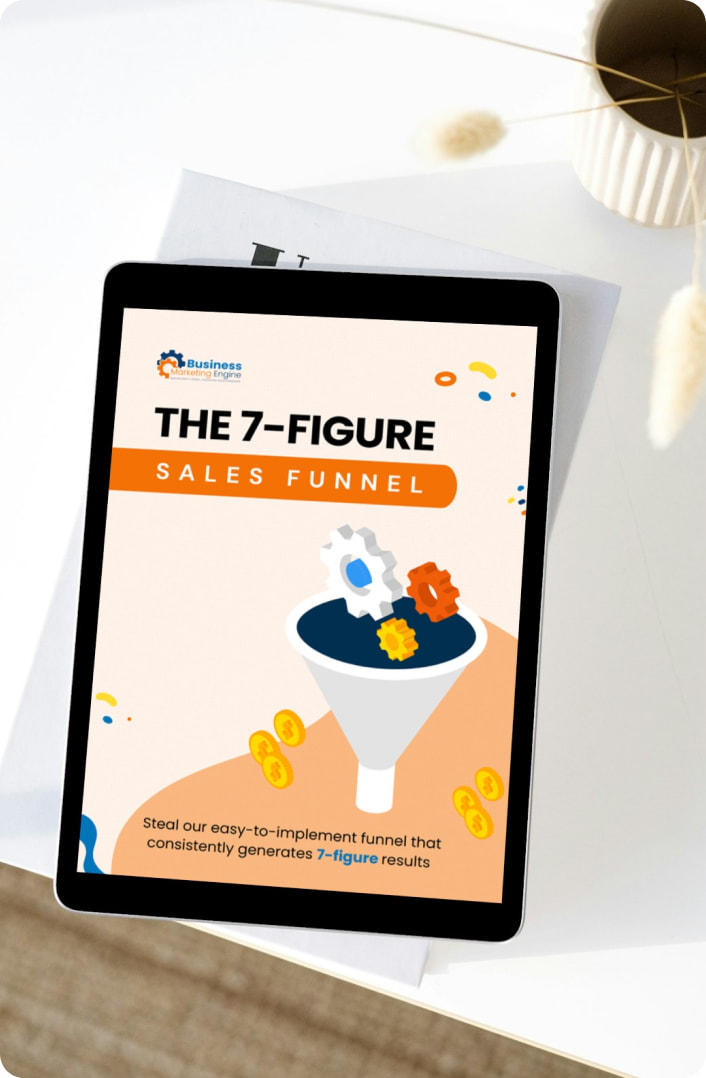Back in my college days, the group Switchfoot came out with a song called “Adding to the Noise.” Even now, more than a decade later, the song rolls around in my head, especially after an internet-heavy day. We’re surrounded by content — emails, blogs, social media, videos, infographics…at the end of the day, it really feels like all of that content is just adding to the noise in my already hectic life.
On the flip side, when I apply the same concept to the content I’m creating from a business side — is it reaching the company’s goals? Or is it adding to the noise in our customers’ lives? Ask yourself these questions. If you’re not sure how to answer, take Switchfoot’s advice — “turn off this song” — and see how professional SEO services could help remove the noise cluttering your life, and theirs, too.
A Closer Look at Content
According to journalist and SEO expert David Amerland, content is everywhere, even outside of the World Wide Web.
“Everything you see in the world around you is content of some kind,” he wrote in “SEO Help: 20 Semantic Search Steps that Will Help Your Business Grow.” “The clothes you wear, the songs you sing, the ads you watch, the foods you buy, the tunes you hum and the memes you share. Everything is a signal that sends a message.”
He notes that we’re all “expert transmitters of messages that announce our interests, status, and intent… All of the things we do constitute a signal that gets decoded the moment someone relevant to us, looks at us with intent, otherwise it appears to be just so much background noise.”
Everything we do, on and offline, is a chance to share content. The words and colors we choose should convey a message to the people around us. That’s why first impressions are so vitally important in job interviewing. One study shows that most people have a high level of accuracy when making a snap judgment on the person; another study shows that almost two-thirds of people can accurately gauge whether someone is gay or straight just by looking at someone’s face. Beyond that, a Princeton study found that a stranger makes a judgment within a tenth of a second of seeing someone’s face.
Now, image that face is your website. A 2012 study found that most Web users got tired of waiting for a website to load after 400 milliseconds — or less than half a second. Imagine those stats now!
You have a fraction of a second to not only get your page to load and, once it does, make a good first impression on your visitors. Once they’ve passed judgment on your website, you’ll have a hard time getting them to change that impression, since these long-lasting thoughts are hard to change.
Is what you’re putting on there organized,captivating and engaging? Does it draw your reader in and make them want to keep coming back? Can a reader quickly and easily take the next step down your sales funnel? Is the impact your page has on the reader traceable?
Or, are you left wondering what, if anything, your readers are taking away? Are you seeing stagnant numbers when you look at the visitors and the time they are spending on the page? Having content is great, but if it doesn’t serve a purpose, you might be adding to the noise. Learn how to change the tune by taking a look at the content being produced by SEO superstars to see if they can help you sing a more meaningful song to your audience.
How Professional SEO Services Write Content
SEO expert Neil Patel says that content marketing and search engine optimization are like peanut butter and jelly: good on their own, but even better once you’ve combined them. I think the connection is even closer. Think about how much content is published every day. Some reports show two million blog posts are written each day; HubSpot stats have shown that 92 percent of companies with more than one blog post each day have grown their customer base because of their blog.
I read once that the idea blog post should be between 1,000 and 1,600 words. If each of those blog posts has 1,300 words, you’re looking at billions of words being published every single day. That is a lot of words, and if they’re just noise, it can feel like even more.
When you look at how professional SEO services create their content, though, you’ll see that over time, you can turn your noise into news, and filler into foundational pieces that your audience returns to read over and over again. Once you apply what they’re doing and see your own stats start to improve, you might even change your own SEO tune.
They Know Their Audience
First and foremost, you have to know who will be reading your content. What do they want to know? Who are they? You need to get to know your audience — and let them get to know you. After all, isn’t that what makes a relationship? Give and take?
The entire point of content is to give your customers information that engages, educates, and serves the purpose of drawing them into your brand so that they are excited about becoming a faithful fan. SEO content goes even further, with the goal of sending your customers right to your website because you were ranked highly enough on the search engine results page.
If you’re going to give your customers that information, don’t you think you should find out a little more about them? Say, for example, most of my audience is made up of non-parents. While they may find references and parallels between parenting and children cute once in a while, it’s not going to be something that really holds their interest for a long time. It will, though, open the doors to a deeper conversation that could lead to a fruitful and positive customer-business relationship.
They Know What Their Audience Members Are Looking to Find
In other words, they understand keywords. Professional SEO services usually include keyword research, which involves uncovering the specific words and phrases that relate to your content and business and the precise wording that your audience members are using when conducting their searches. Remember to write down how those keywords are ranking, and keep track of when you use them in your content.
Then, use the keywords correctly. While they should be worked into you article, don’t overdo it. Make sure your phrasing is natural and makes sense to anyone reading the content. Add the keyword into the article’s title, the subheads, and the first and last paragraphs. This way, they keyword will stand out to the search engines and give you a better chance of being seen by your current and prospective customers.
To keep your keywords from turning into noise, use them in articles that add value to your readers’ lives. You are the expert in your niche — show off your experience! Use your blog and content to educate, inform, and entertain your readers. Take them behind the scenes of your company. Give them access to new information or earl details. Teach them how to use a product or create a how-to guide on a service. Create evergreen content that makes reading it worth someone’s time and energy.
They Know How to Organize Their Articles
As I mentioned, most of the blog posts that are getting a noticeable response are at least 1,000 words, with an even greater percentage coming in at slightly more than 1,500 words. While a 400-word blog post might be quick and easy to read, it’s hard to really develop and publish the in-depth information and add value to someone’s life in what comes out to be a handful of paragraphs.
Keep a few structural things in mind:
- Write a headline that engages and includes your keywords. Plenty of tools abound that let you check the impact of your title.
- Keep your content as original as possible. If you do directly quote someone or refer to their piece, use citations. With so many plagiarism scanning platforms, most professional SEO services are running their content through at least one to make sure their content is original. Plagiarism is just as serious now as it was in high school and college. Give the creator of the content the credit that is due by linking to their piece; not only does it help the reader find out more, but it also ups the chances that, in return, the person you linked to might link to your own site in the future.
- If you’re on a WordPress site, look for different plug-ins that will help you maximize your content. These plugins will calculate your keyword density, will give you space to add descriptions and tags, and will paint you an overall picture of what you’ve written and the reach it might possibly see. (Hint: use the article’s keyword in the meta description in your plug-in, too).
- Use headers and subheaders. Organize content with lists and bullet points. Make sure yours has enough so that a reader can quickly scan for for the information they are looking for.
- There’s value to white space. Run-on sentences and long paragraphs are hard to read, so keep your sentences short and your paragraphs a decent length.
- Use conversational language. Think about the tone and voice of your company — and the tone and voice your audience uses. Is it light and joking? Or are you more formal?
- Use active voice and exciting, strong words to truly convey the idea you want to get across.
- Make sure to edit your work before you publish your piece, and ask someone else to review it, too. Spell checkers are fantastic — don’t forget to use them. Read your piece out loud. Another trick — read your piece backward. Your brain won’t be able to skip over words and make you think they are correct. Check your grammar and Google anything that you’re questioning. It’s always better to take those few minutes and ensure what you’ve written is correct.
- Don’t forget to use images and tags that describe those images in case they don’t load
They Know How to Promote Their Content
Writing your content is half the battle. Now that you’ve written and proofread your piece and have decided that it’s not just adding to the internet’s noise, you can publish — and then the real work begins. How will you make sure your content is reaching the people who want and need to see it?
- Are you on social media? Share links on your business and personal pages.
- Are you on LinkedIn? Share your article link.
- Do you have an email newsletter? Share your link.
- Do you know people who might be willing to share the link? Send it their way.
They Know When to Make Changes
The online world is constantly changing — and so are the tricks and tools you need to navigate the complicated world of search engine optimization. Everything from the way you share your keywords to the way you spell certain terms (e-mail is now email, Web site is now website, and Internet is now internet, says the updated AP Stylebook). Many SEO pros will go back to previously published articles to update facts and stats.
When something isn’t working the way it should, most people who provide professional SEO services know that they need to change the song and call in someone else. While they understand it can take time to see results, they also know their limits and abilities. Take stock of yours.
Look at the content your writing and ask yourself, “what’s the point?” If you can define why someone will care about and want to read your piece, you’ve done your job — you’re not publishing noise, you’re publishing valuable content that can help improve an aspect of someone’s life.
If you can’t answer that question, though, you may be contributing to the internet’s noise. Take a look at what you’re publishing and make the necessary changes. I promise you’ll see a difference.
Not sure where to start? Call in some professional SEO services. We’re offering a free SEO audit. Our experts will look at what you’re doing and will help you write the lyrics, find the best producer, and put out a piece that will truly sing to your readers.
Oops! We could not locate your form.






